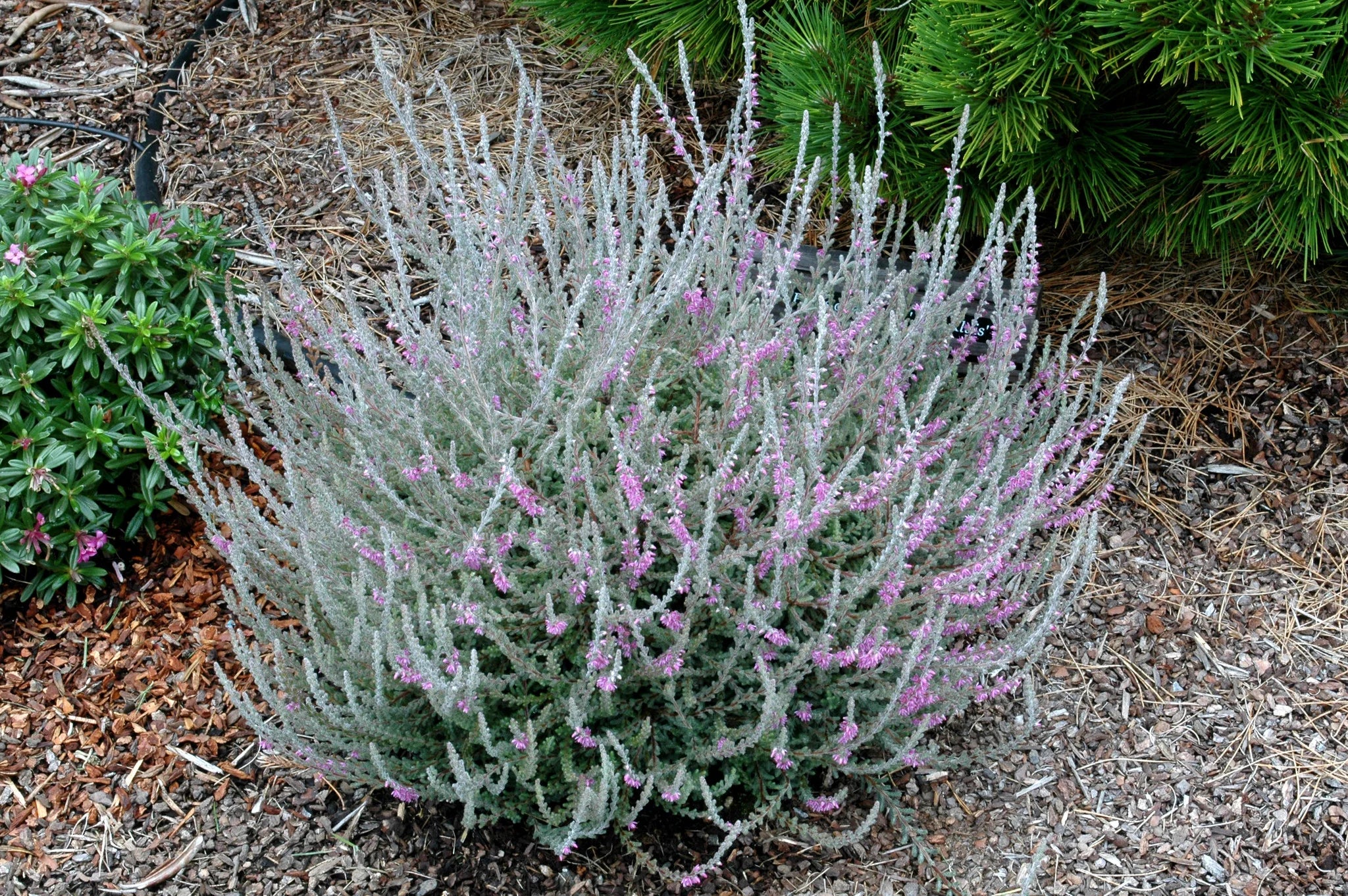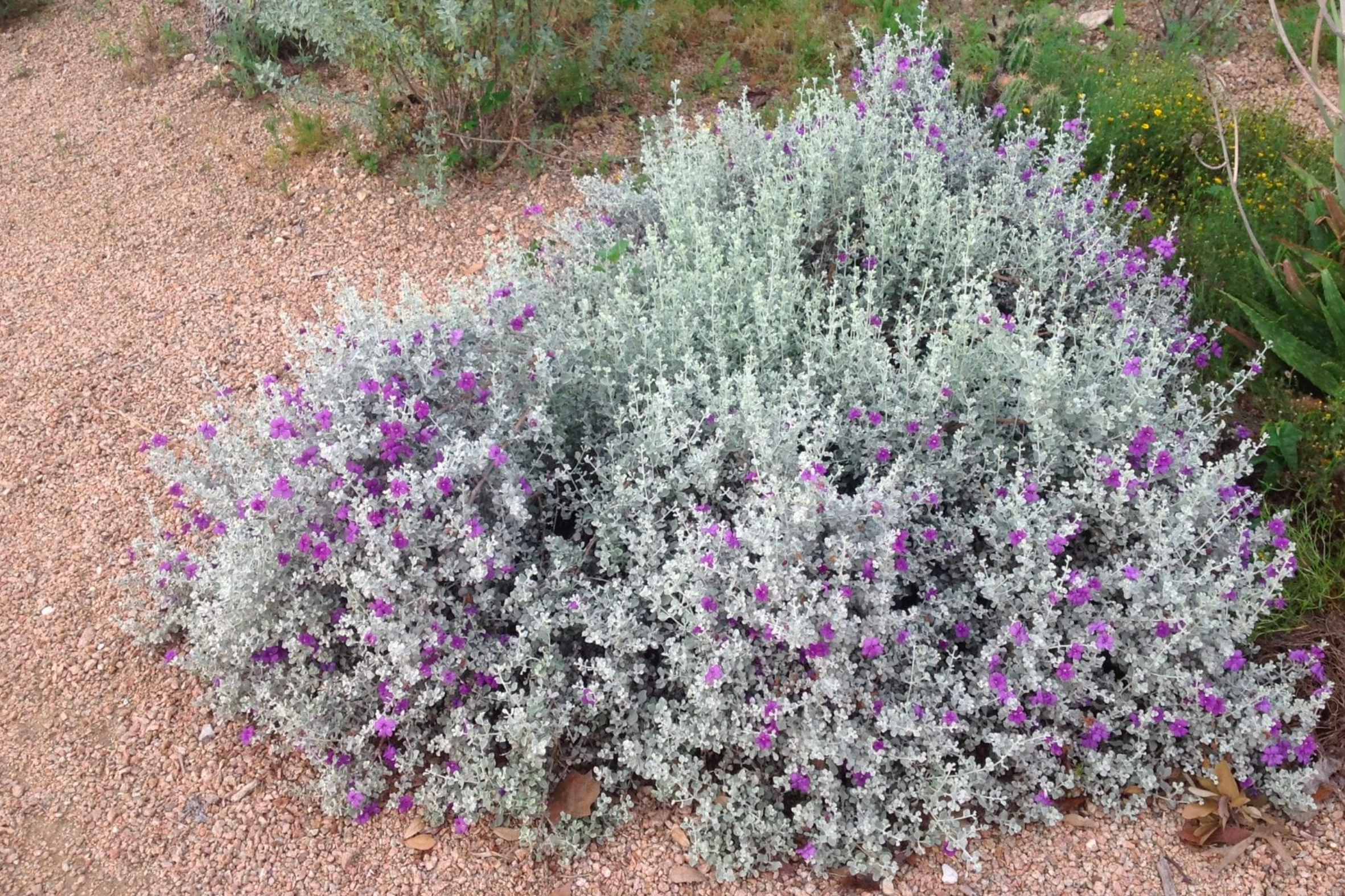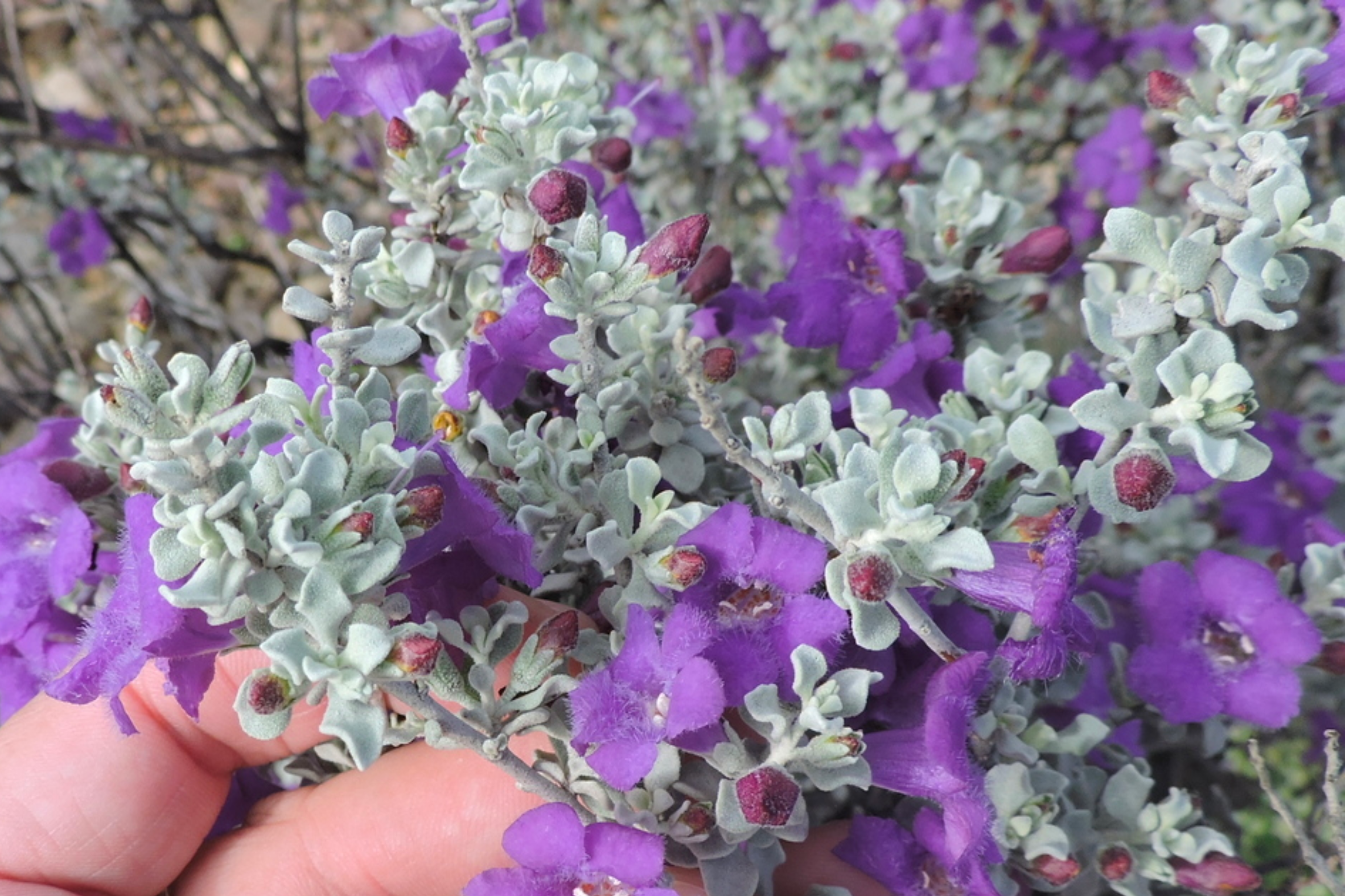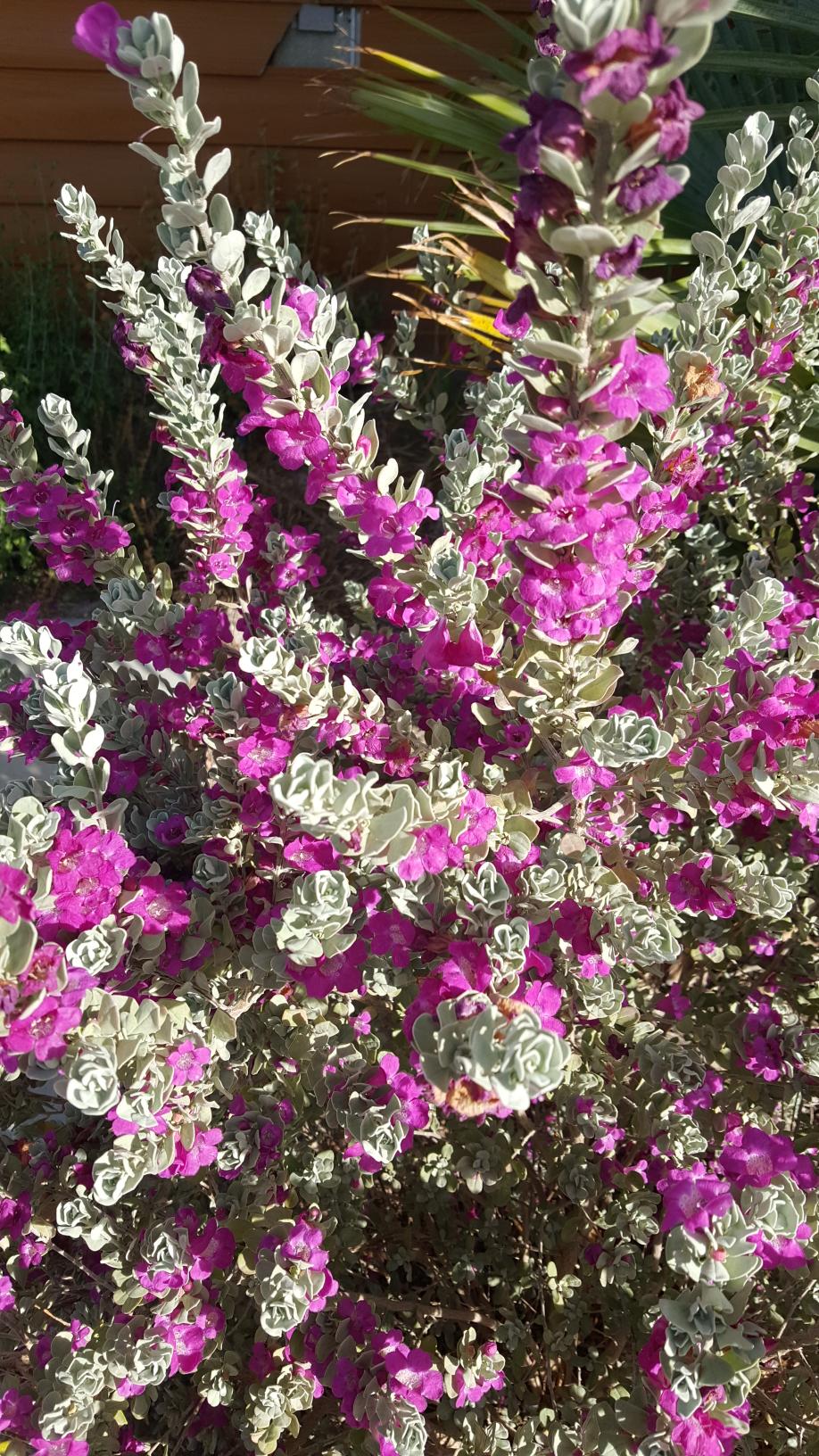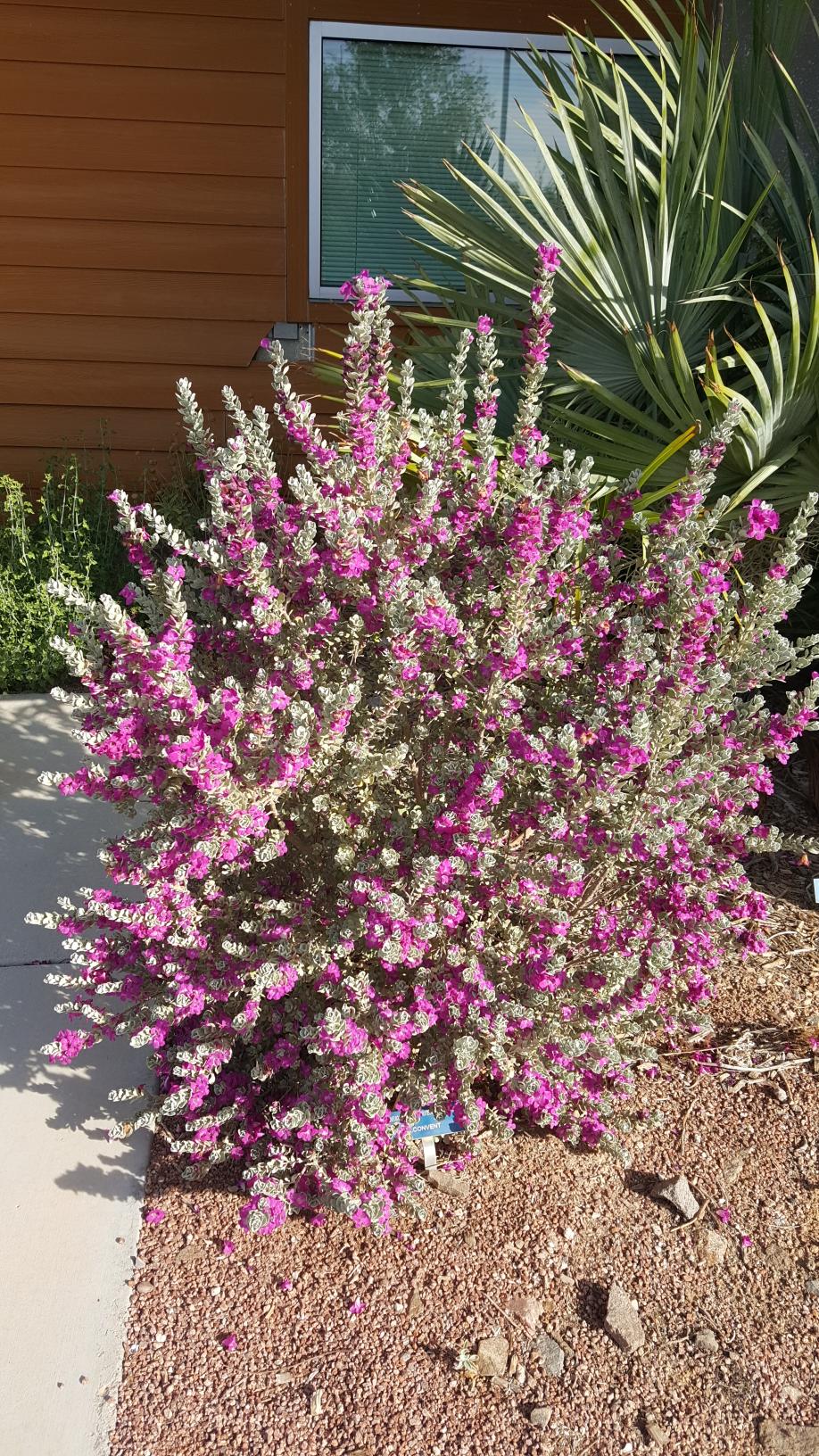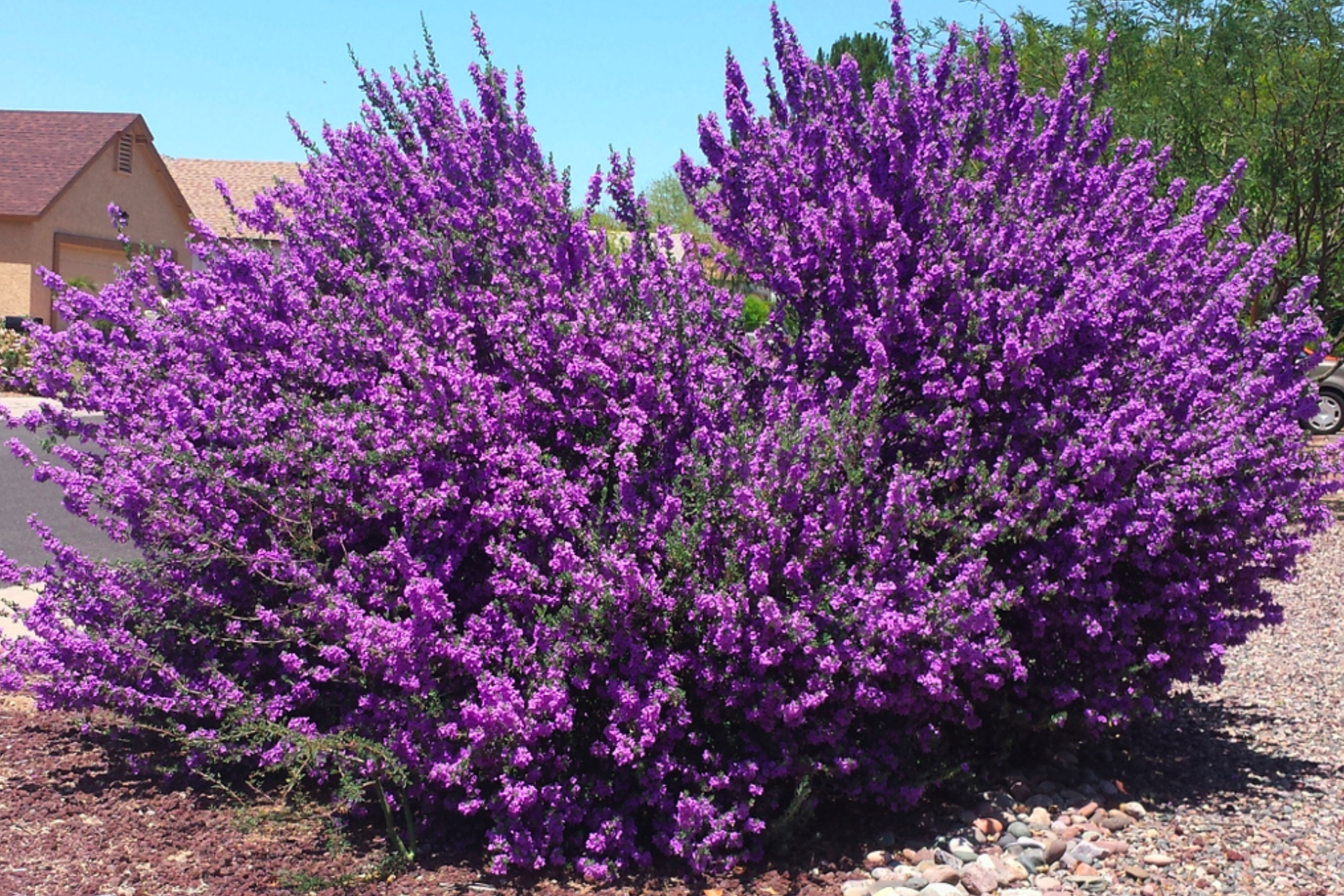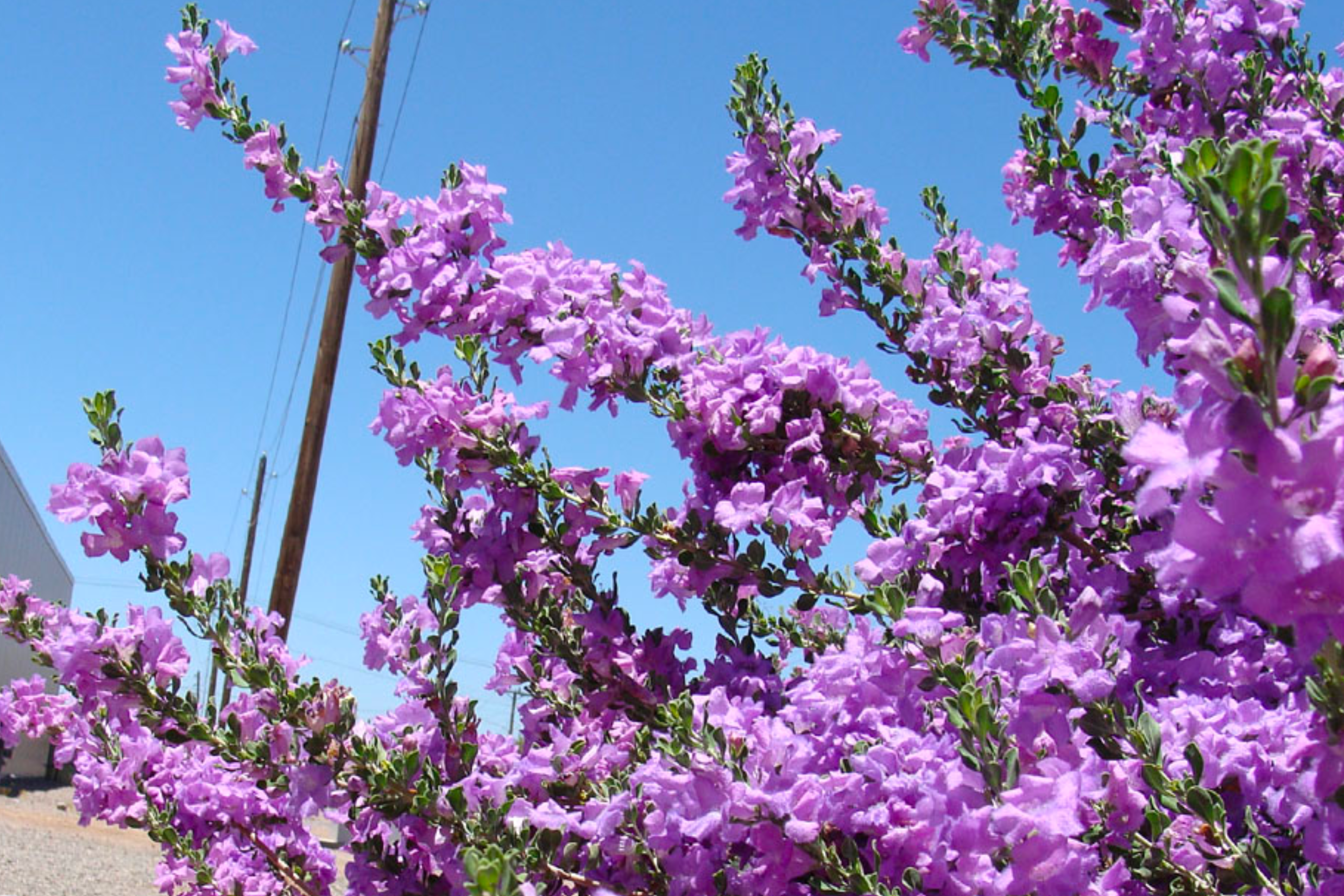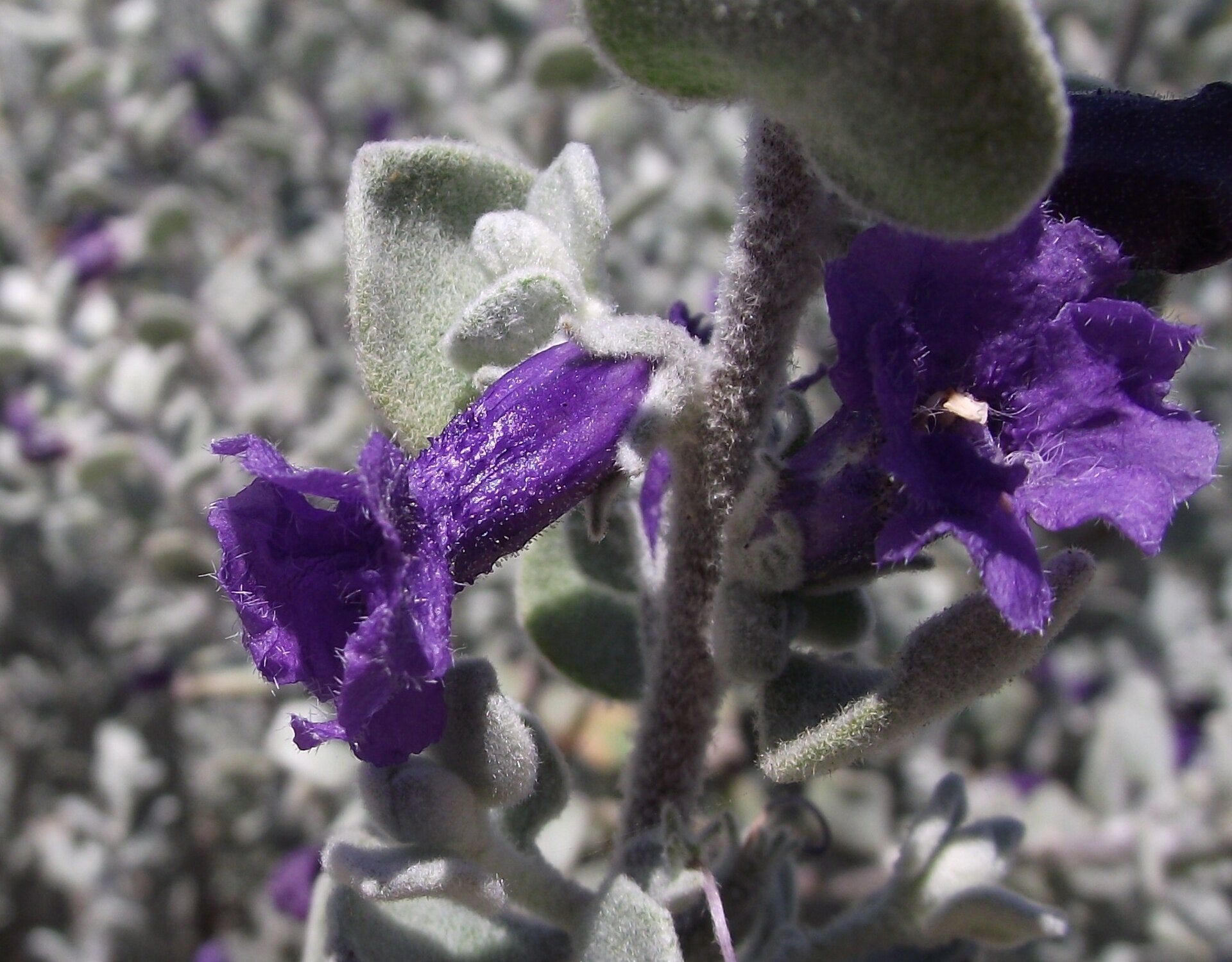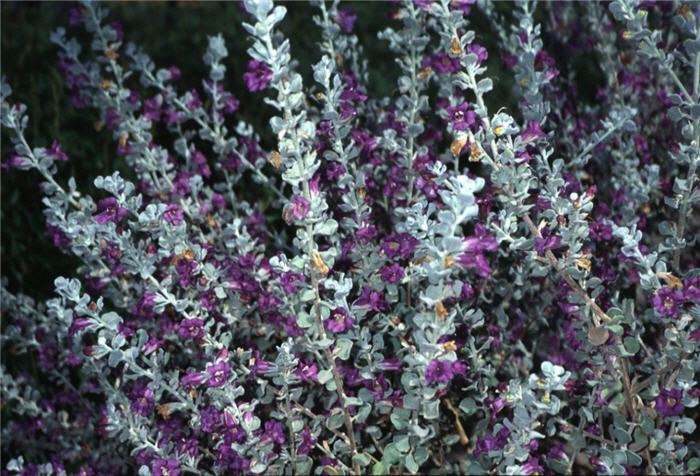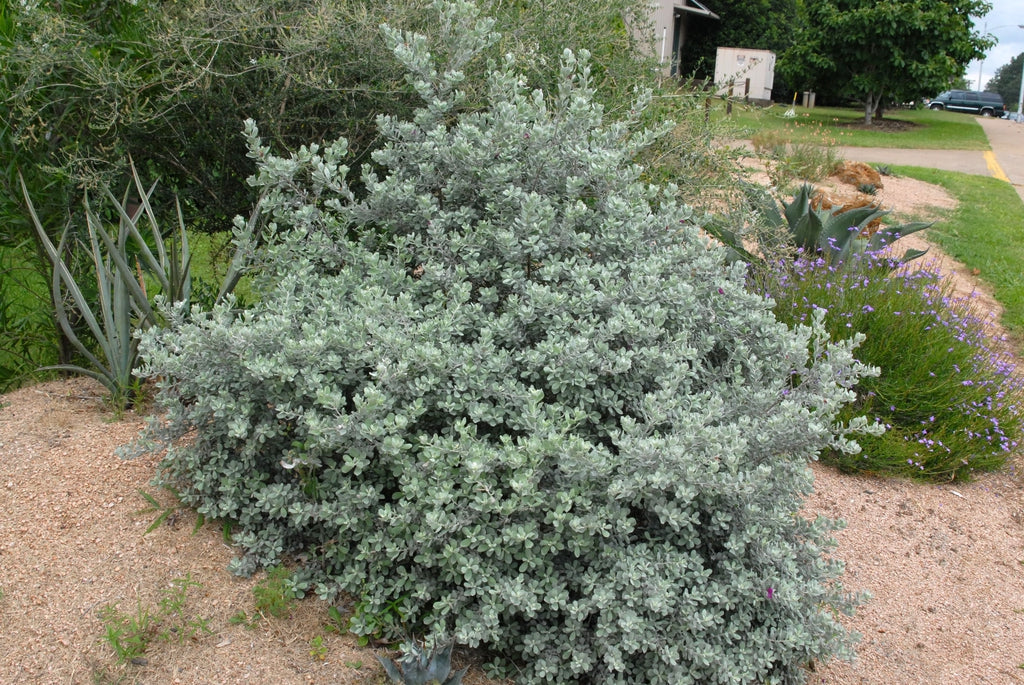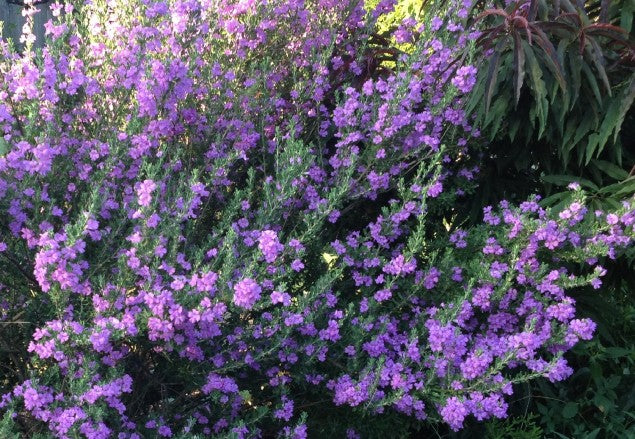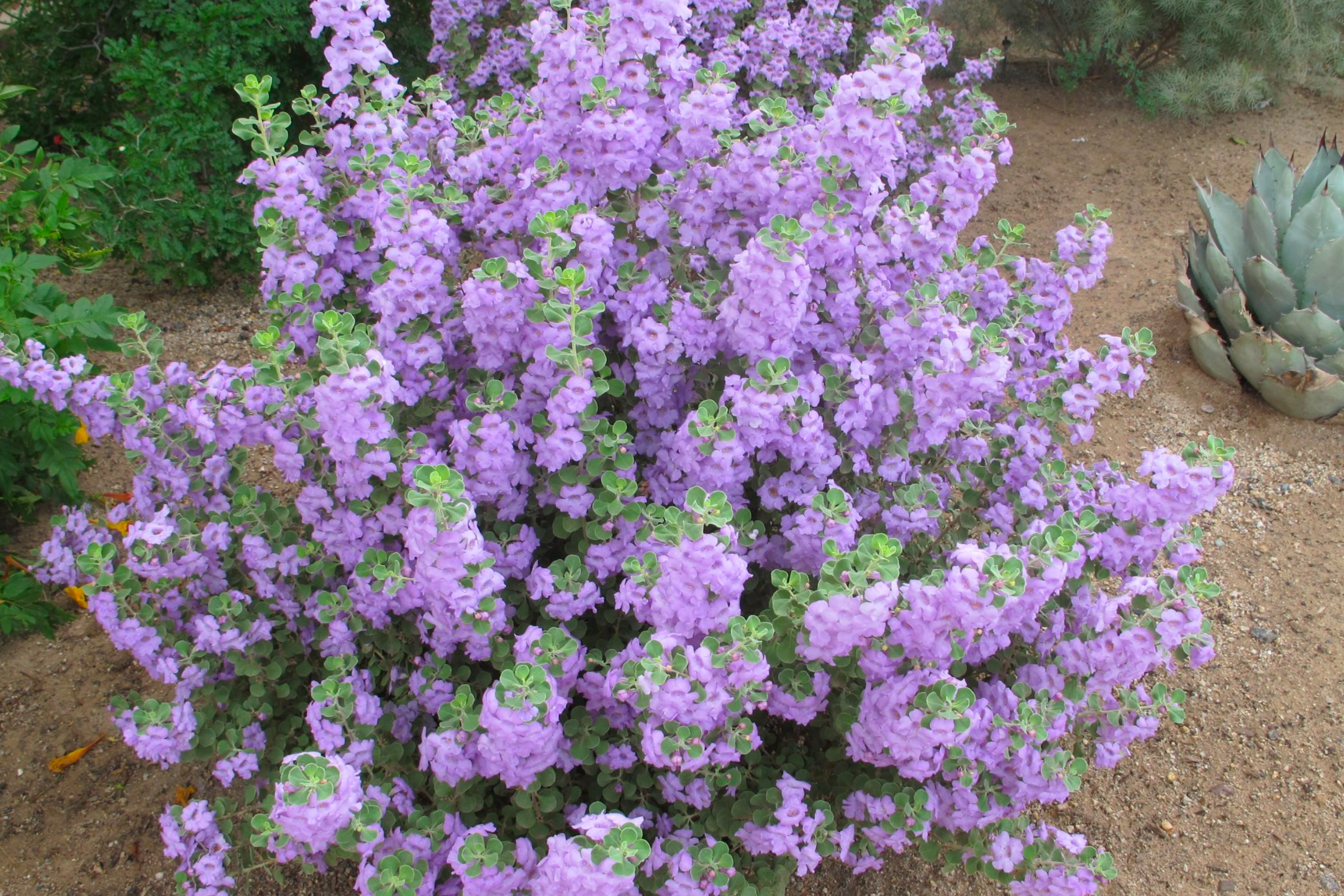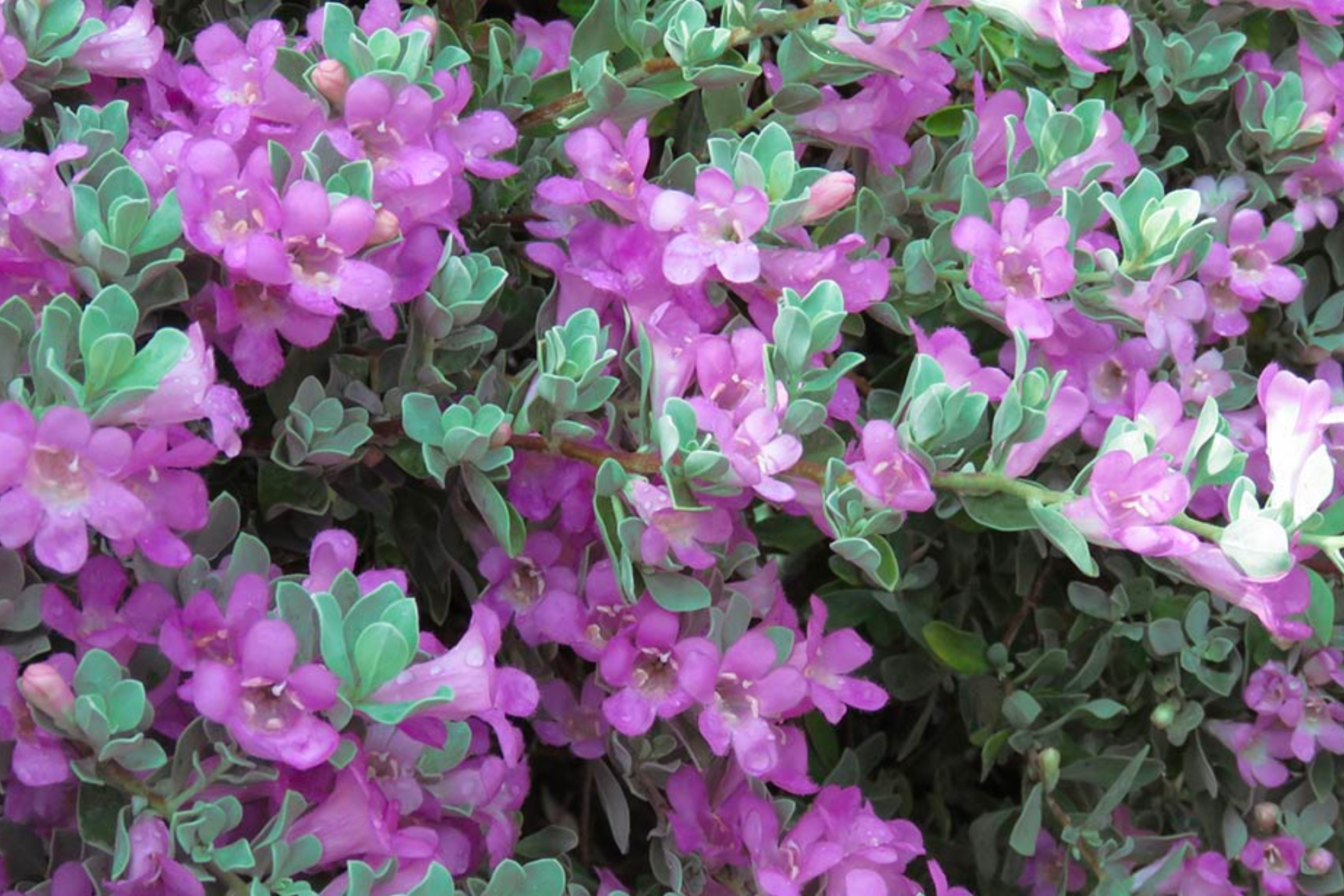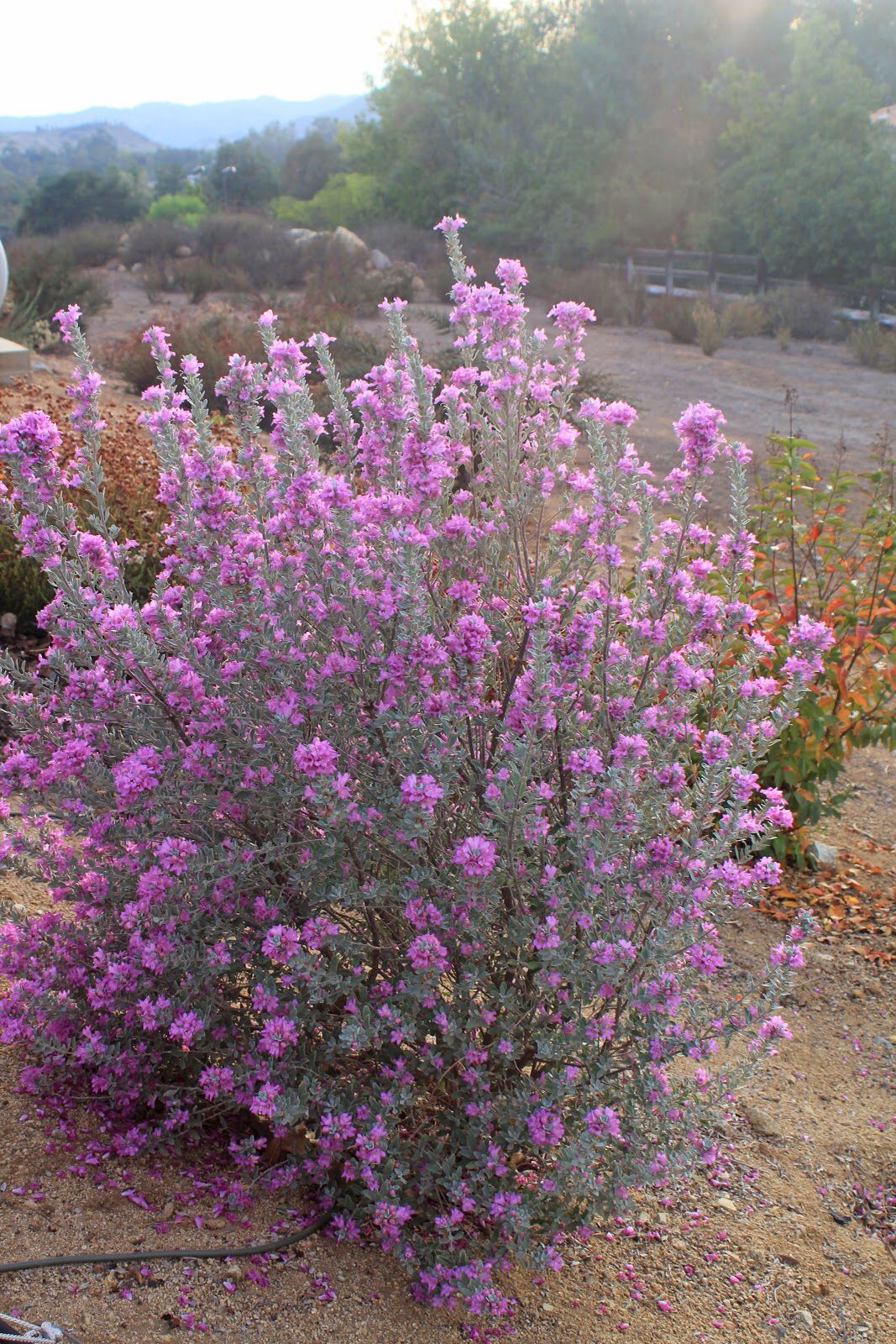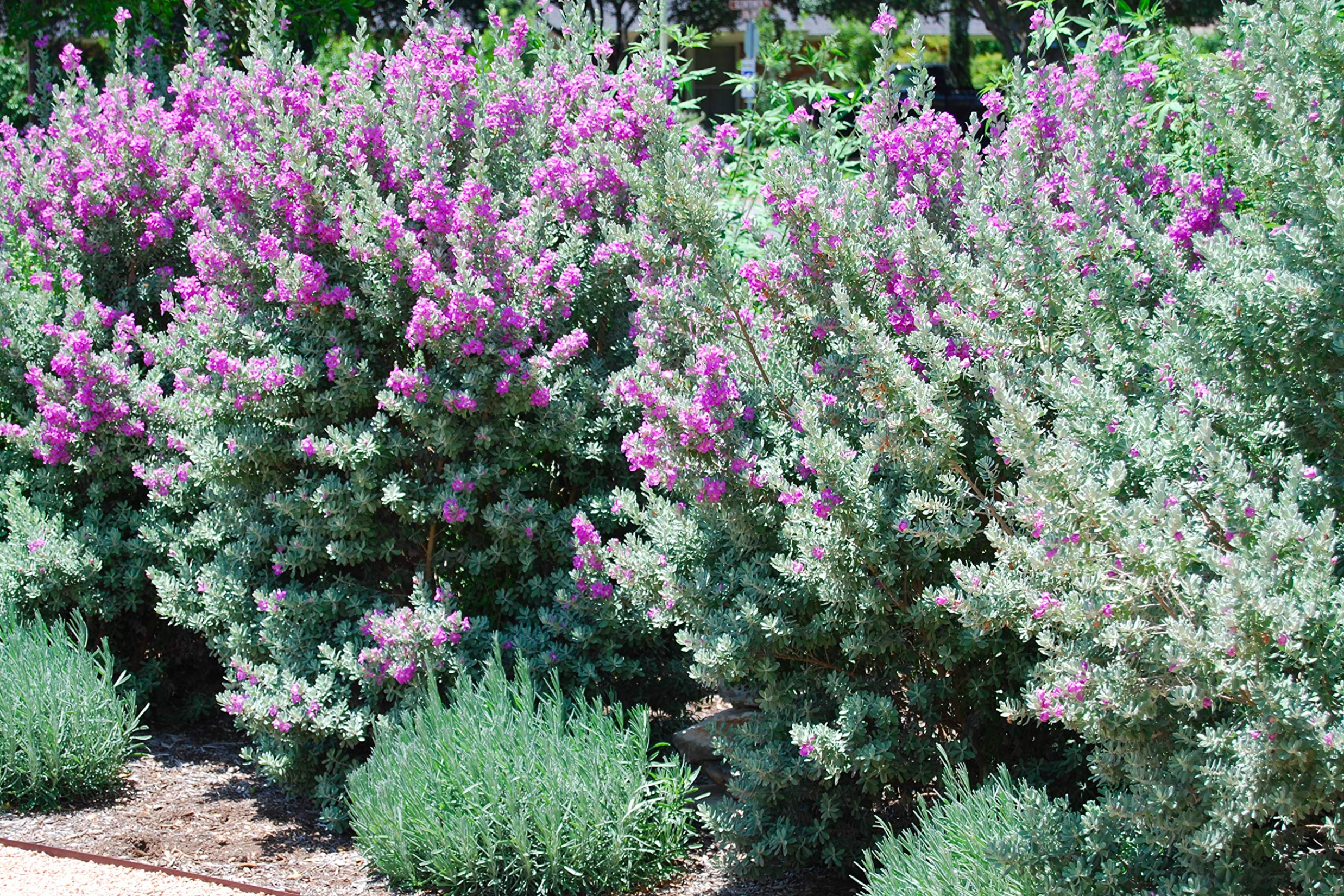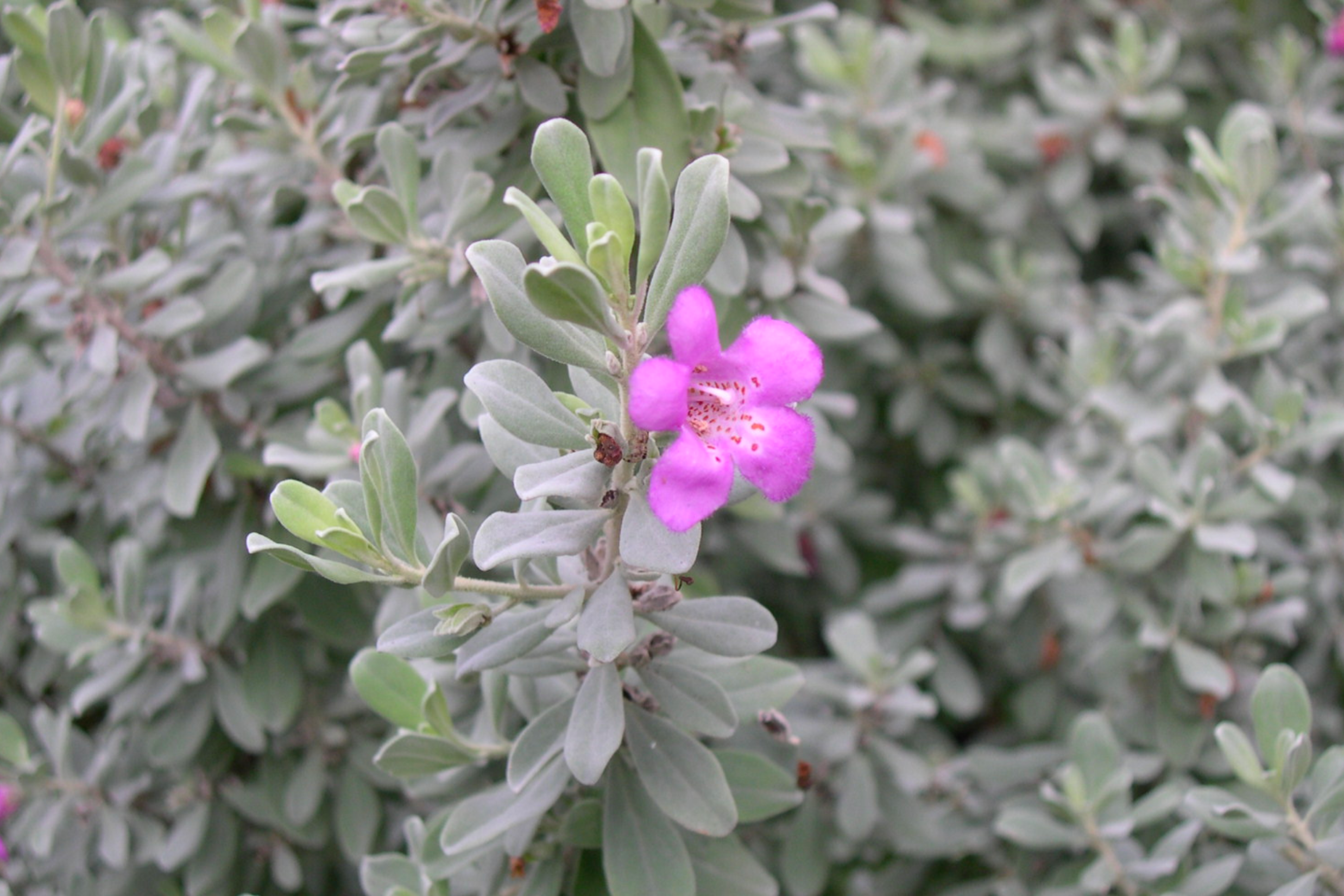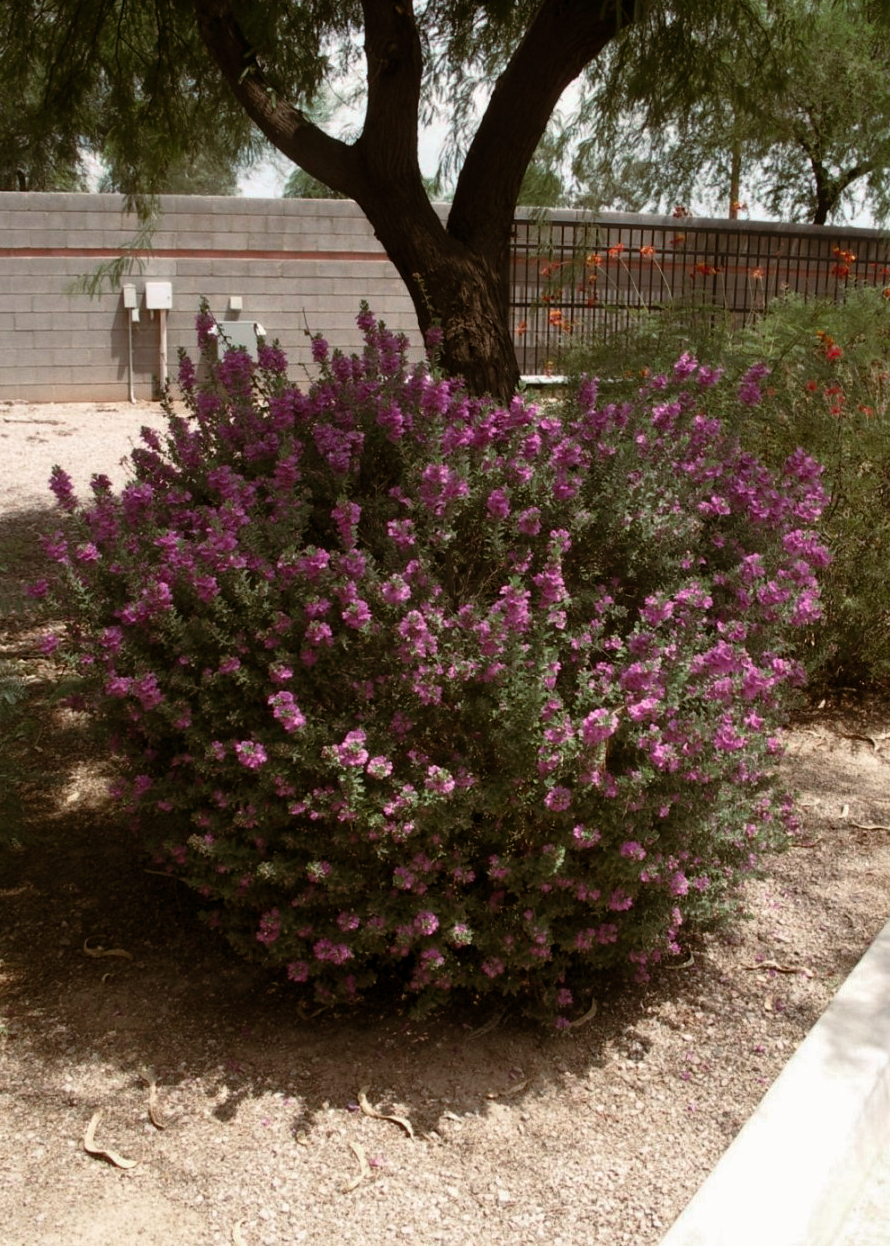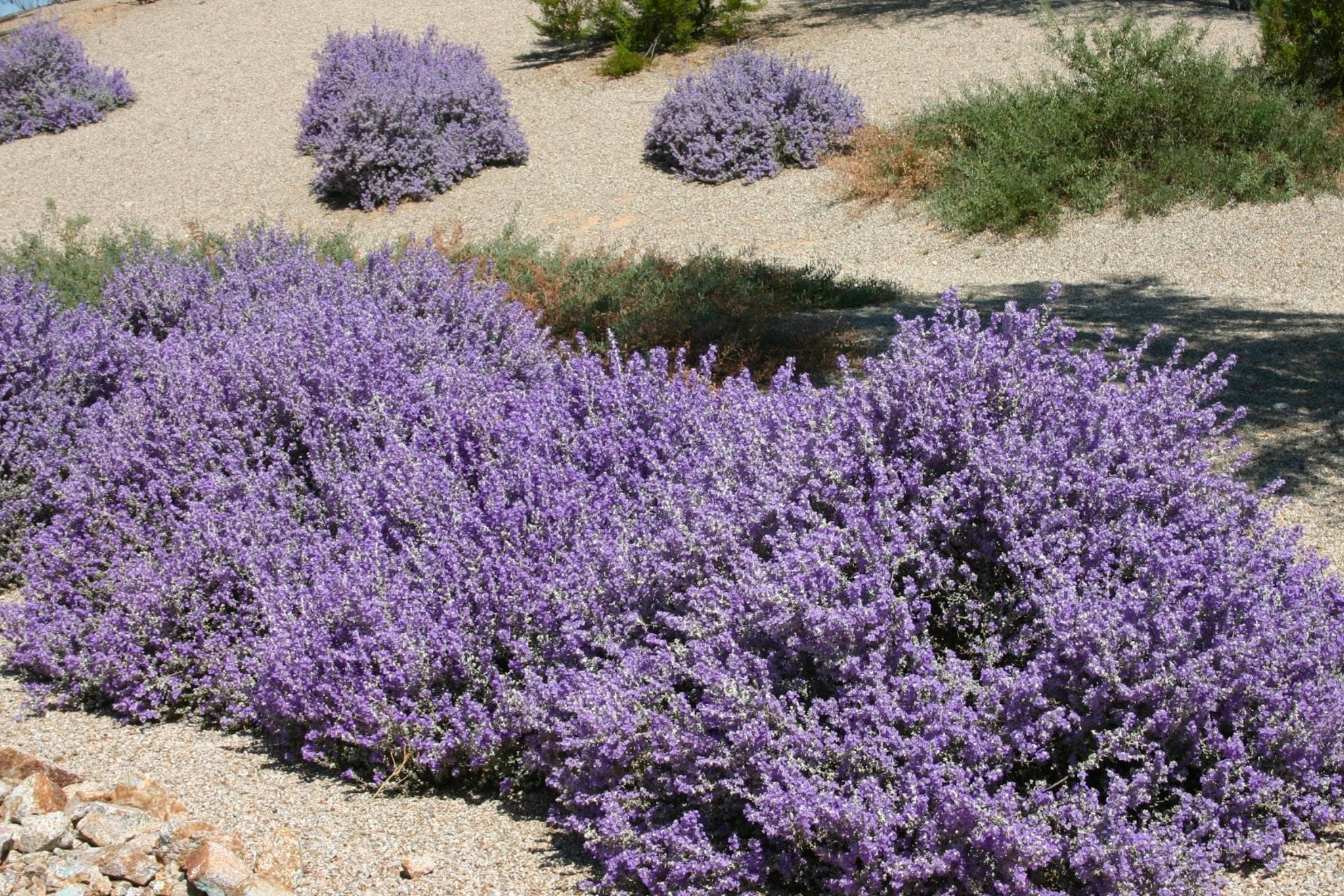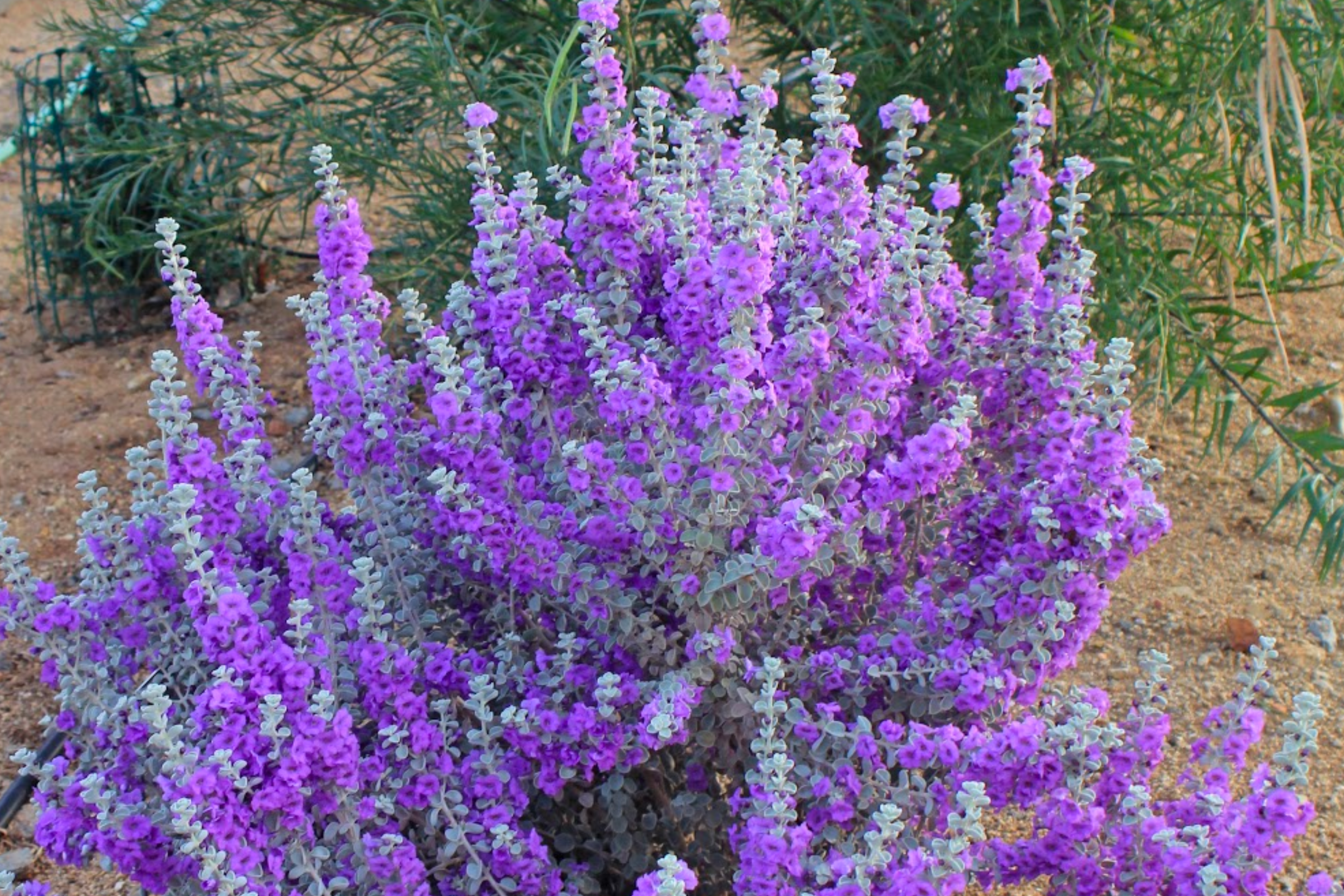L. candidum is a plant that is closely related to L. frutescens. However, it is smaller and more compact and has even more silvery, almost white leaves. This plant is very striking and eye-catching with its intense violet flowers that bloom in the summer and fall as a response to humidity or rainfall. It is native to the Big Bend National Park gravelly hills and Black Gap Wildlife Refuge in Southern Brewster County in the Trans-Pecos and usually grows on soils of limestone origin, particularly on caliche hillsides. Since it is adapted to alkaline and well-drained soils, it is an ideal plant for arid areas or dry gardens that require minimal maintenance. But like L. frutescens, violet silverleaf should be planted in highly well-drained alkaline soil in full sun because overwatering or poor drainage will kill it quickly, and shade will promote sparse, leggy growth and less flowering.
It should be planted in raised beds if you want to plant it in areas with high rainfall or poorly drained soil. If the soil is acidic, dolomitic limestone should be added. Fertilizing is not necessary. Cenizos are not susceptible to pests or diseases other than cotton root rot, which can be discouraged by well-drained soil. Although violet silver leaf does not need pruning, light pruning can be done once before buds form in late winter or early spring. It is hardy to 5-10 degrees F. Benny Simpson introduced two selections of L. candidum: 'Silver Cloud,' for its rich purple flowers and silvery leaves, and 'Thunder Cloud,' which is smaller and more floriferous than 'Silver Cloud.'
